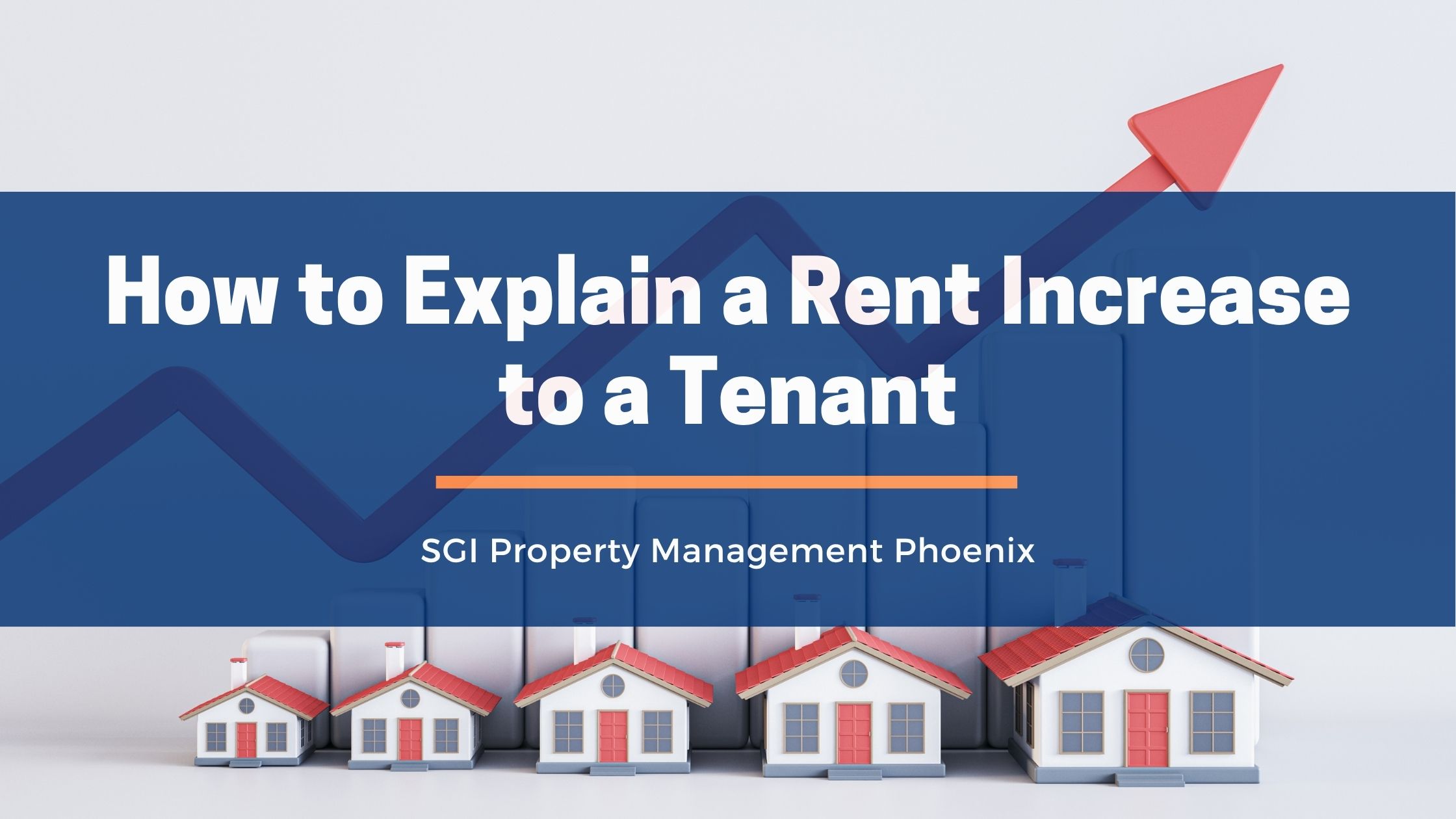
At Phoenix Property Management, we often speak with landlords who feel uneasy about notifying tenants of a rent increase. It’s an important step in keeping an investment profitable, but it also has to be handled with care. A poorly delivered notice can create frustration or even legal issues. When approached thoughtfully, though, a rent increase can be understood as a fair, transparent decision that protects both the landlord and the property.
Below, we’ll explore how to communicate rent increases clearly and professionally, while keeping your tenant relationships strong.
Understanding the “Why” Behind Rent Increases
Most tenants understand that rental prices change over time. Costs for insurance, maintenance, property taxes, and utilities rarely stay still. When those expenses climb, rent adjustments become necessary to keep operations sustainable.

Recent economic insights show that inflation continues to shape housing markets nationwide, raising costs for both property owners and tenants. Framing a rent increase as a response to these external factors, not as a personal choice, helps tenants see the decision as a reasonable business adjustment rather than an emotional one.
For example, if insurance premiums or HOA fees rise, explain that these cost changes directly impact the property’s budget. By grounding your explanation in broader economic realities, you reduce tension and maintain trust.
It also helps to review comparable rental rates in your area to confirm your new price aligns with market standards. This ensures your decision is supported by data and viewed as fair and transparent.
Communicate With Transparency
Tenants are more receptive to rent changes when they understand the reasoning behind them. A good approach is to show how the new rent compares to local averages.

For example:
“After reviewing nearby listings, similar three-bedroom homes in this area are renting for around $1,800 per month. Your current rate is $1,500, so the new rate of $1,650 keeps you below market value while helping us manage increased costs.”
This kind of explanation shifts the focus from emotion to facts. It also helps tenants feel part of the conversation instead of caught off guard. Drawing on insights from a recent fee transparency study adds helpful context, reinforcing that your pricing reflects real market conditions rather than personal preference.
Keeping your property aligned with market demand, while minimizing rental vacancies, can make future rent adjustments easier for both sides.
Keep It Professional and Put It in Writing
Once you’ve discussed the increase verbally, always follow up with written notice. A professional letter or email creates clear documentation for both parties and minimizes misunderstandings.

Your written notice should include:
The current and new rent amount
The effective date of the increase
A short explanation referencing market conditions or costs
A polite and professional tone
Providing clear, written communication not only builds trust but also ensures you’re following the Arizona Residential Landlord and Tenant Act. The law outlines notice requirements for both fixed-term and month-to-month leases, helping landlords stay compliant while giving tenants adequate time to prepare. Maintaining this level of professionalism reinforces transparency and strengthens your reputation as a responsible property owner.
Balance Fairness With Compassion
For long-term tenants, showing appreciation can make all the difference. Recognizing loyalty before delivering the new rate helps soften the message.
For instance:
“We truly value you as a long-time tenant and appreciate how well you’ve cared for the property. To show our appreciation, we’re keeping this increase below current market rent.”
This approach maintains goodwill while protecting your bottom line. It also encourages continued tenancy, saving you the cost and downtime of finding new renters.
Offer Support When Needed
Some tenants may express concern about affordability. In these situations, empathy goes a long way. Consider offering short-term solutions, such as a payment plan or a delayed start date for the new rate.

This flexibility can prevent turnover and reinforce your reputation as a fair and understanding landlord. It’s often better to retain a good tenant at a slightly lower profit than to face vacancy and turnover costs. Understanding how rental property investment interest rates influence long-term profitability can also help you make more balanced decisions when setting new rental terms.
Strengthen Tenant Relationships Through Clarity
A rent increase isn’t just a financial adjustment, it’s a moment of communication. How you handle it reflects your management style and professionalism. Tenants who understand why a decision was made are more likely to respect it and continue their lease.

By keeping conversations transparent, written, and empathetic, you not only maintain compliance but also build a foundation for long-term tenant satisfaction.
Key Takeaways
Be Transparent: Explain rent changes as responses to real-world cost increases or market shifts.
Show Evidence: Use local market comparisons to demonstrate fairness.
Stay Professional: Provide written documentation and follow all notice requirements.
Show Appreciation: Recognize long-term tenants to preserve loyalty.
Offer Flexibility: If possible, provide short-term support options for tenants under financial stress.
These steps help you navigate rent increases smoothly, balancing financial goals with respectful tenant communication.
Final Thoughts
Raising rent is never the easiest part of being a landlord, but it’s a natural and necessary aspect of property ownership. When handled with care, transparency, and respect, it can actually strengthen your tenant relationships rather than strain them.
If you’re looking for guidance on setting fair rates, drafting notices, or managing tenant communications, our team can help you streamline the process and stay compliant while protecting your investment.









